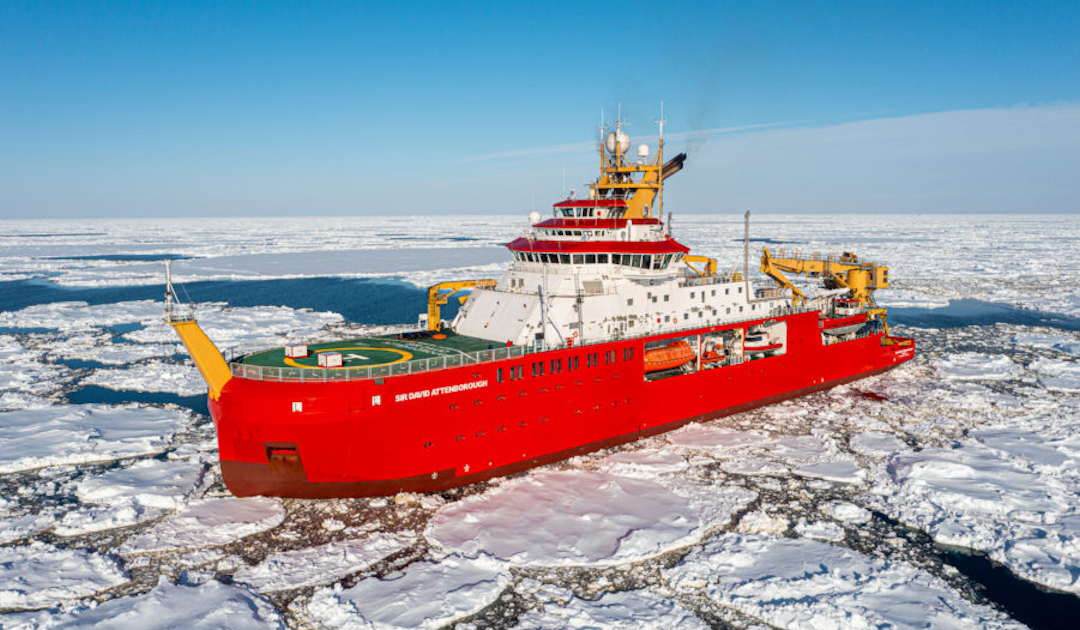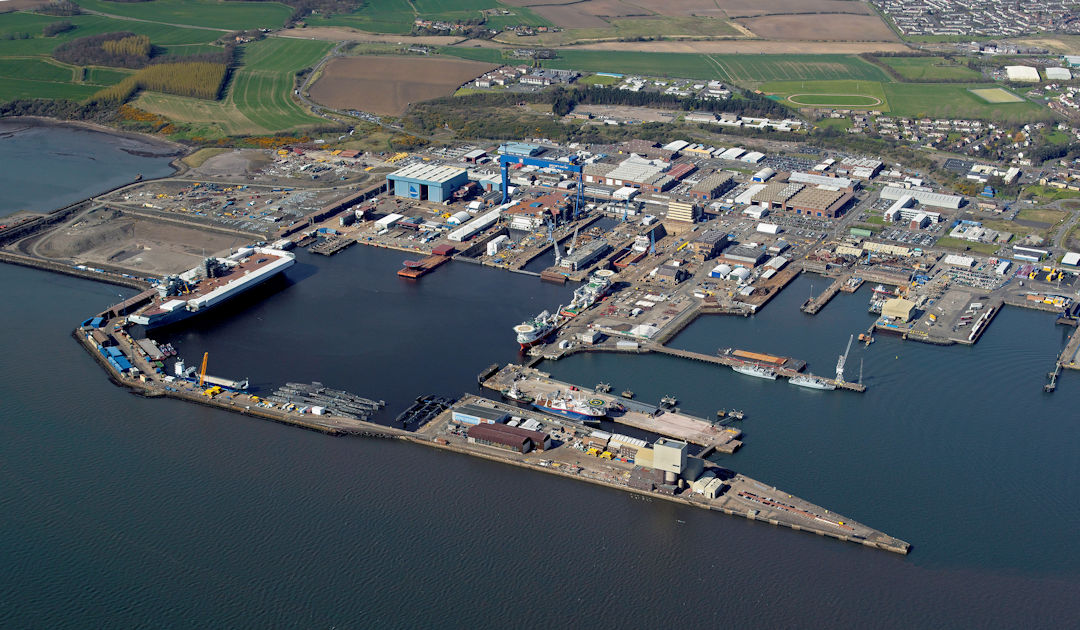
The polar regions have now become the focus of attention in many countries, but in some cases for different reasons. The UK, for example, has been increasing its research efforts in the Arctic and especially in the Antarctic for some time. This includes the construction of the new flagship Sir David Attenborough and an extensive modernization program of its Antarctic infrastructure. Now another funding has been announced for the three research vessels.
A total of over 50 million Euros over the next three years has been promised by British Industry Minister Nusrat Ghani for the UK’s three research vessels. This is intended to finance maintenance and modernization work. As part of the notification, it was also revealed who will perform the work on the three vessels. The contract was awarded to the Scottish-based Babcock Rosyth shipyard. The whole news was announced on the occasion of a press conference last week.


In addition to the Sir David Attenborough, the newest ship, the British research fleet also includes the two research ships operated by the National Oceanography Centre, the RRS James Coook and the RRS Discovery. The latter two were commissioned in 2007 and 2013 respectively and, unlike the research icebreaker, do not operate exclusively in polar regions. The two sister ships are used for scientific purposes everywhere, including deep-sea research. Industry Minister Ghani said, “This research is invaluable, which is why we are providing the necessary funding to maintain these important research vessels, drawing on Rosyth Shipyard’s proven track record of excellence in maintaining UK vessels.”

The government grant was well received by the National Environment Research Council NERC. “The UK’s fleet of advanced research ships provides state-of-the-art facilities for scientists to conduct research of our oceans and polar regions, building our understanding of the ice, atmosphere, and seas,” Executive Chair Professor Sir Duncan Wingham told the media.
Other beneficiaries of the 50 million include the latest remotely operated underwater vehicles, which are aboard all three research vessels. The best-known underwater robot is probably Boaty McBoatface, whose naming caused a sensation. Originally, the research icebreaker was to have been given the name if the British public had had its way. Currently, the AUV (Autonomous Underwater Vehicle) and research vessels are some of the most advanced equipment available for UK research in polar and deep-sea environments. However, the nature of their areas of operations puts great demands on the material and therefore regular maintenance and servicing is costly but necessary.

Babcock Rosyth Shipyard, located in Scotland, will be responsible for the planned maintenance and future modernization work. British Defense Minister Ben Wallace was very pleased with the choice, as the shipyard is also responsible for the construction and maintenance of some of the largest and newest ships in the British Navy. “Rosyth is a cornerstone of the UK shipbuilding industry and has already secured a number of large construction and maintenance contracts that bring a wealth of expertise and experience to the UK shipbuilding sector,” he tells the media. However, it will probably be a while before this work is started. That’s because all three ships are currently deployed: the James Cook in the eastern Pacific, the Discovery in the Atlantic, and the Sir David Attenborough plowing through the waves of the South Atlantic toward the Falkland Islands and on to Antarctica.
Dr Michael Wenger, PolarJournal
Featured image: RRS “James Cook” photographed by Leighton Rolley, from www.cruisemapper.com
More on the topic






Sorry if I’m wrong, but maybe “RRS” instead of “RSS” ?
Thank you very much, Sue, for pointing out this mistake to us and for reading so dilligently our article. We have corrected the mistake immediately.
Best regards from Switzerland
The PolarJournal Editorial Team